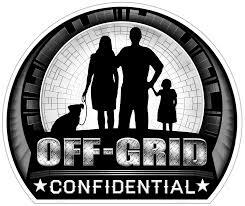
Share this graphic on your site!
The Use of Lithium in the Energy Economy
Known as “white gold”, lithium is currently the hottest mineral on the market
Lithium At A Glance
- Silver-white colored soft metal
- Highly flammable and reactive
- Stored in mineral oil to prevent corrosion and tarnish
- Commercial lithium production involves isolating lithium from a mixture of potassium chloride and lithium chloride through electrolysis
- Uses:
- Lithium-ion batteries (including powering electric vehicles)
- Lubricating greases
- Glass and ceramics
- Metallurgy
- Nuclear fusion applications
- Lithium carbonation (medication for bipolar disorder)
Key Terms To Know
- Lithium carbonate equivalent (LCE)
- The first chemical in the lithium production chain
- Used to calculate lithium production
- Lithium-ion (Li-ion) batteries
- Advanced battery technology that uses lithium ions
- Capable of very high voltage and charge storage per unit mass and unit volume
- Direct lithium extraction (DLE)
- Defined: Brine flows through a lithium-bonding material using adsorption, ion-exchange, membrane-separation, or solvent extraction processes followed by a polishing solution to extract lithium carbonate or lithium hydroxide
- Benefits:
- Eliminating/reducing the footprint of evaporation ponds
- Decreasing production times (when compared with conventional brine operations)
- Increasing recovery from 40% to +80%
- Reduced need for freshwater
- Lower usage of reagents
- Increased product purity (when compared with conventional brine operations)
- Direct lithium to product
- Attempts to extract lithium metal in a polymer and then remove the lithium to an electrolyzer tube to create final lithium product
- Direct shipping ore (DSO)
- Low-grade spodumene concentrate brought to market in less than 1 year for a brownfield project
Types of DLE Technologies
- Adsorbents
- Uses sorbents
- Used commercially
- 80-99.9% lithium recovery
- Ion exchange
- Uses resins, aluminates, or ceramics
- Precommercial stage
- 80-99.9% lithium recovery
- Solvent extraction
- Fluid solvent mixture is blended with brine to extract water
- Precommercial stage
- 99.9% lithium recovery
- Membrane separation
- Used in conjunction with ion exchange and adsorbents/solvent extraction
- Untapped potential in nanofiltration and reverse osmosis
- Precommercial stage
- ≥99% lithium recovery
- Electrochemical separation
- Electrochemical extraction of lithium from brine through adsorption or intercalation
- Precommercial stage
- +90% lithium recovery
Lithium demand is expected to rise from 500,000 metric tons of LCE in 2021 to three million to four million metric tons in 2030
The Lithium Economy
- Largest lithium reserves in Chile: 9.2 million metric tons in 2020
- Largest producer of lithium is Australia
- Global lithium consumption for batteries: 77.8k mt LCE
- Global lithium consumption for non-battery uses: 134.9k mt LCE
- Projected global lithium demand in 2025: 1m mt of LCE
- Forecasted global lithium supply in 2025: 814k mt of LCE
- Established lithium-producing nations:
- Australia
- Chile
- China
- Argentina
- Nations with recently mapped resources and reserves:
- Mexico
- Canada
- Bolivia
- United States
- Ukraine
- Siberia
- Thailand
- United Kingdom
- Peru
Demand for Lithium will increase by 22x by 2030
The Lithium Supply Chain
- The US holds just 3.6% of global Lithium reserves, meaning reliance on the international mining industry is greater than ever
- Major increase of demand for mines specializing in:
- Graphite
- Cobalt
- Nickel
- REEs
- Manganese
- Copper
- Silicon
- Chromium
- Zinc
- Spotlight: Southern Alberta & Saskatchewan:
- Compelling Geology
- Optimal Location
- Minimal Capital Cost
- But most of the lithium supply chain is controlled by countries outside the US:
- Chile (43.7%)
- Australia (22.3%)
- Argentina (9.0%)
- China (7.1%)
- US (3.6%)
This has led to the greatest supply-demand imbalance in modern times
- Skyrocketing lithium demand:
- In 2015:
- Batteries: <30%
- Ceramics and glasses: 35%
- Greases, metallurgical powders, polymers, and other industrial uses: +35%
- By 2030, batteries will account for 95% of lithium demand
- The following factors driving demand could account for 4,000 to 4,500 gigawatt-hours of Li-ion use by 2030:
- Electric vehicles
- Energy-storage systems
- E-bikes
- Electrification of tools
- Battery-intensive applications
The global push to cut carbon emissions is driving demand for electric vehicles, raising the stakes for lithium producers
Powering Electric Vehicles
- 8 kg of lithium in a lithium-ion battery pack for a single electric car
- 100,000 tons of lithium produced globally in 2021
- 22 million tons of worldwide reserves
- Sufficient to produce just under 2.5 billion batteries
- 2 billion battery electric, plug-in hybrid and fuel-cell electric light-duty vehicles needed by 2050 to hit net zero
- EV demand driving lithium prices by around 550% in one year from 2021 to March 2022:
- $75,000 per metric ton and lithium hydroxide
- More than $65,000 per metric ton (compared with a 5-year average of $14,500 per metric ton)
- 0-80% of lithium in end-of-life batteries may be recycled, depending on the process used
- By 2030, around 6% of total lithium production will be secondary supply
Lithium-Ion Battery Basics
- Higher energy density than conventional lead-acid batteries and nickel-metal hydride batteries
- Self-discharge at a lower rate than other battery types
- Don’t require periodic full discharges
- Provide consistent voltage even as the charge degrades
- Require onboard battery management (software and hardware) to support longevity
- Require cooling and heating systems to improve efficiency and safety
- Typical battery warranty of at least 8 years and 100,000 miles
- Optimum operating range 50-86℉
No doubt there is much to discover about the potential of lithium to transform daily living, from transportation to communication — increasing supply is critical
A lithium-charged future awaits, power up!
Subscribe to the “Off-Grid Confidential” monthly newsletter at: Lithiumstocktips.com to learn more about Grounded Lithium
Sources:
https://www.statista.com/topics/3217/lithium/#topicHeader__wrapper
https://www.weforum.org/agenda/2022/07/electric-vehicles-world-enough-lithium-resources
https://www.cei.washington.edu/education/science-of-solar/battery-technology
https://www.caranddriver.com/research/a31875141/electric-car-battery-life
https://www.supplychaindive.com/news/us-strengthening-lithium-supply-processing-ev-batteries/634544
